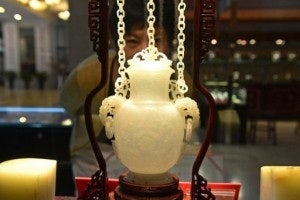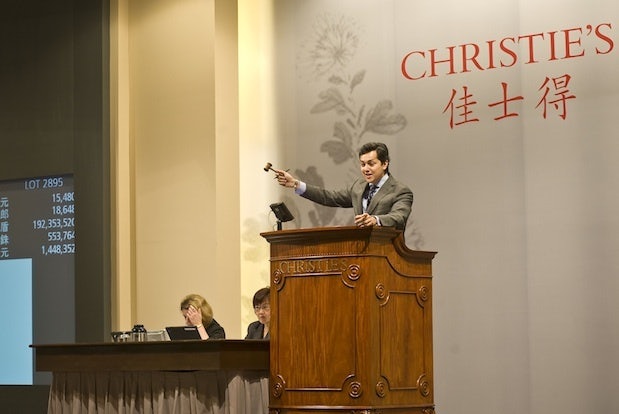Chinese Pressure Led Bonhams To Pull Two Controversial Pieces From London Auction#

Yet another auction controversy regarding the sale of Chinese antiques at an international auction house has illustrated the difficulties surrounding this auction segment. According to the AFP, two Qing-era jades -- a green jade hanging vase and lid from the reign of Emperor Qianlong (1711-1799) and a white jade disc from that of Emperor Jiaqing (1796-1820) -- were withdrawn from a Bonhams auction in London this week after claims in China that the items had been looted from the Old Summer Palace in Beijing in the 19th century.
Bonhams issued an apology as it confirmed the two jade carvings would not be sold after the owner withdrew them from a planned auction on Thursday to "avoid any possible offence".
The planned sale had sparked a furious reaction from Tan Ping, an official at China's State Administration of Cultural Heritage, who labelled it "against the spirit of international conventions".
"Bonhams is very sorry to read reports in the Chinese press that offence has been caused in China by the proposed sale of two jade carvings," Bonhams said in a statement received by AFP on Monday.
"There was never in any way an intention to cause offence, and Bonhams regrets that this interpretation has been published."
While the fallout from this controversy will likely be muted for Bonhams, as it quickly withdrew the items and issued an apology, this week's drama illustrates the minefields surrounding the auctioning of Chinese antiquities outside of the country and the country's increasingly aggressive moves to block their sale.

The squeeze put on Bonhams also brings to mind the disastrous 2009 Christie’s auction of works from the collection of Yves Saint Laurent. At that auction, Cai Mingchao — an adviser to China’s National Treasures Fund, which seeks to retrieve looted treasures — bid 15 million euros (US$21 million) for a pair of bronze Zodiac Heads looted in 1860 by British and French forces at Yuanmingyuan, ultimately refusing to pay in what he called a “patriotic act.” In the ensuing three years, Christie’s has stepped up its efforts to repair relations with the Chinese government, launching the “Trans-Realism” Chinese contemporary art exhibition (with pieces hand-picked by the Chinese government) in New York in 2011 and looking into financing a series of exhibitions with arts institutions in China.
However, the headache that major global auction houses are getting from China's ever more dramatic and vocal outcries about antiques auctions sales could ultimately benefit the Chinese contemporary art world, which is surrounded by none of the "repatriation" issues that we see in the antiquities or traditional Chinese art segments.
With virtually no restrictions on import or export, Chinese contemporary art is -- for major auction houses like Christie's or Sotheby's, as well as mainland Chinese houses like China Guardian -- far easier to deal with. As such, we expect to see a stronger focus on this segment, particularly in more far-flung locations like New York or London, where we've already seen an increase in Chinese bidders. Despite a slowdown in economic growth this year, rising disposable and discretionary income among China's wealthy has had a direct correlation to the rise in art collecting and investment buying funds, which are now going towards not only antiques and traditional artwork, but also to proven historical contemporary Chinese art.

Yet with Western collectors getting back in the game after being overtaken by Chinese buyers in the wake of the global economic crisis in 2008, demand is not only rising in mainland China but also in Europe and North America. So while Hong Kong has become, in recent years, the epicenter of the Chinese contemporary art auction world, it wouldn't be surprising to see greater competition from Sotheby's or Christie's outposts in New York and London.
This trend is, ultimately, likely to feed more interest within China as well, as blue-chip Chinese contemporary artists selling outside of the Mainland will make them more of a commodity at home, making the desire to buy and sell inside and outside of mainland China stronger among the country's emerging collectors.
